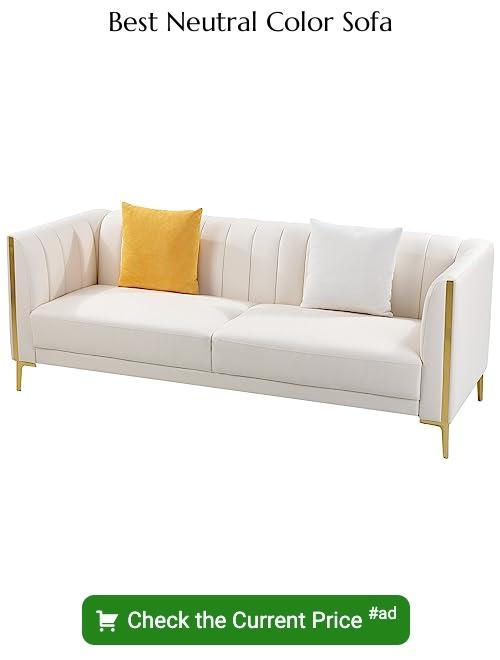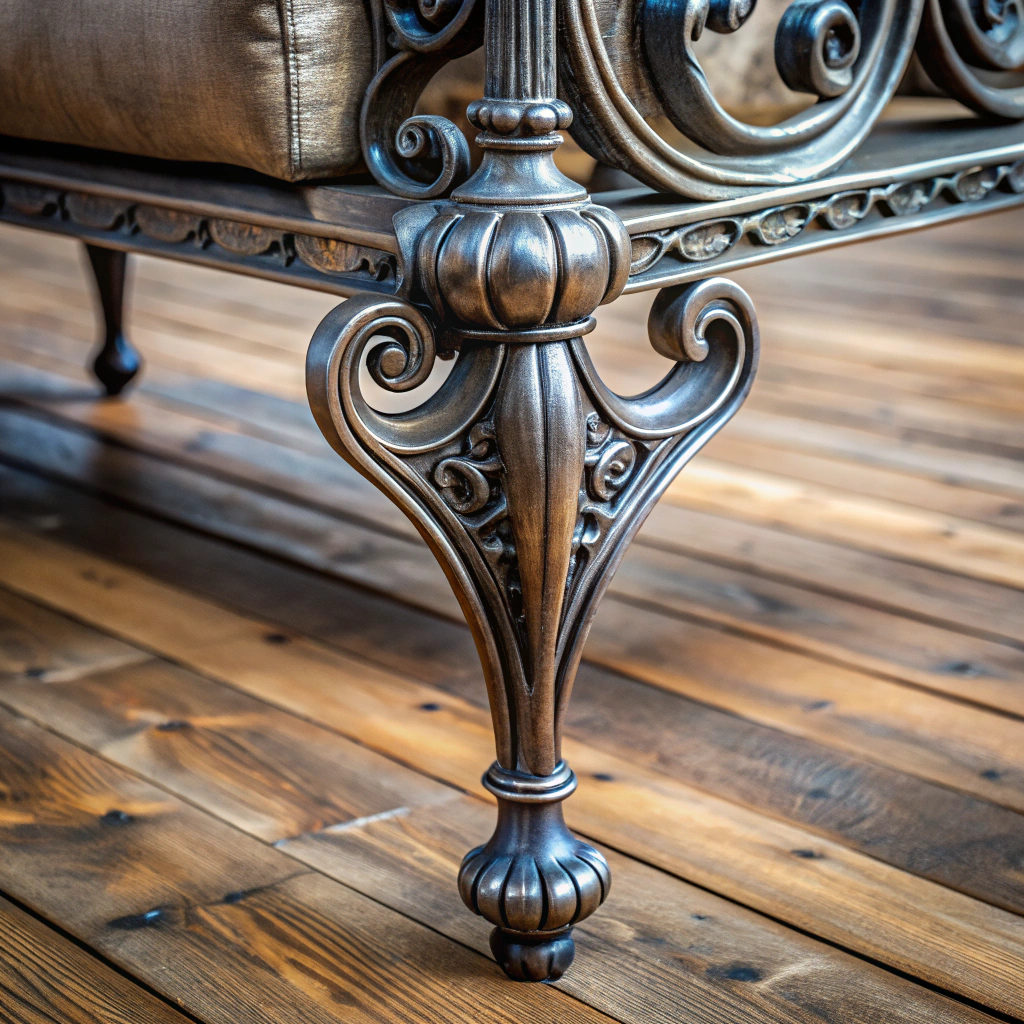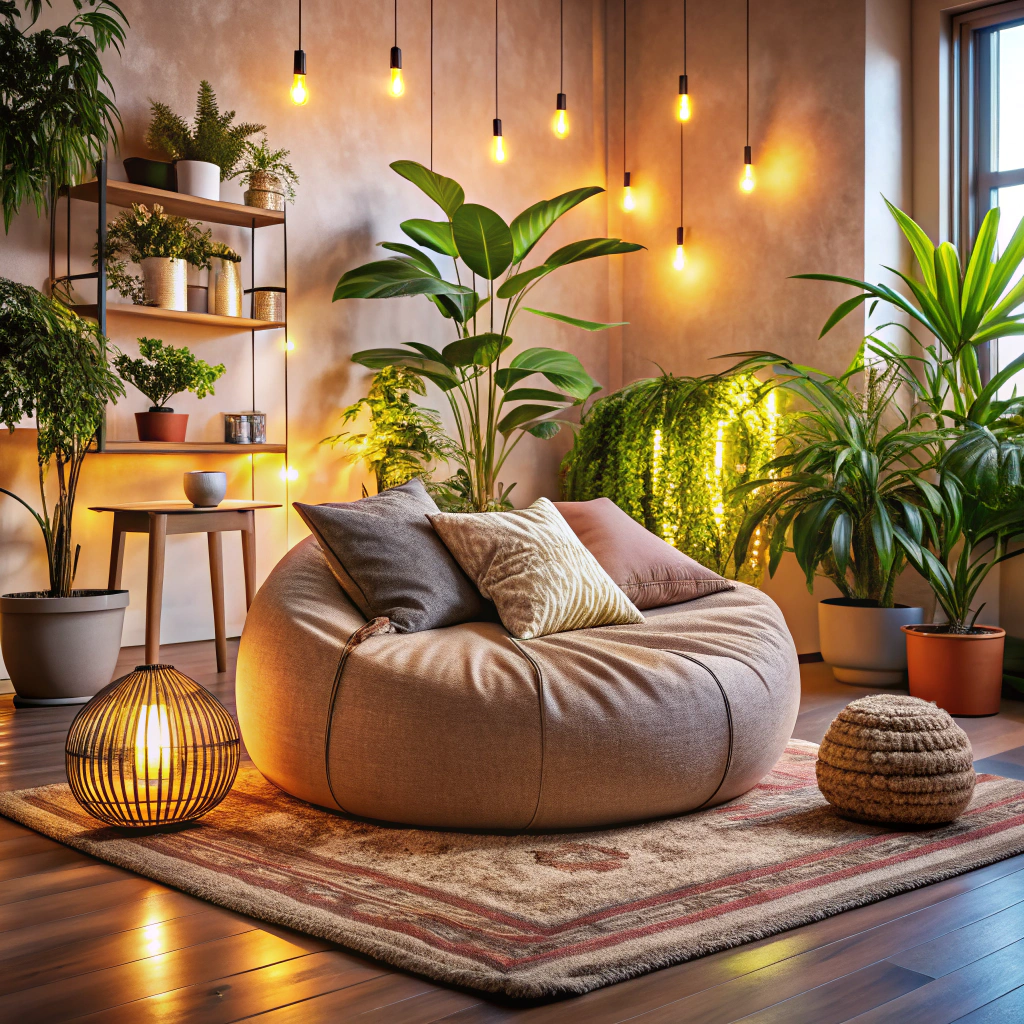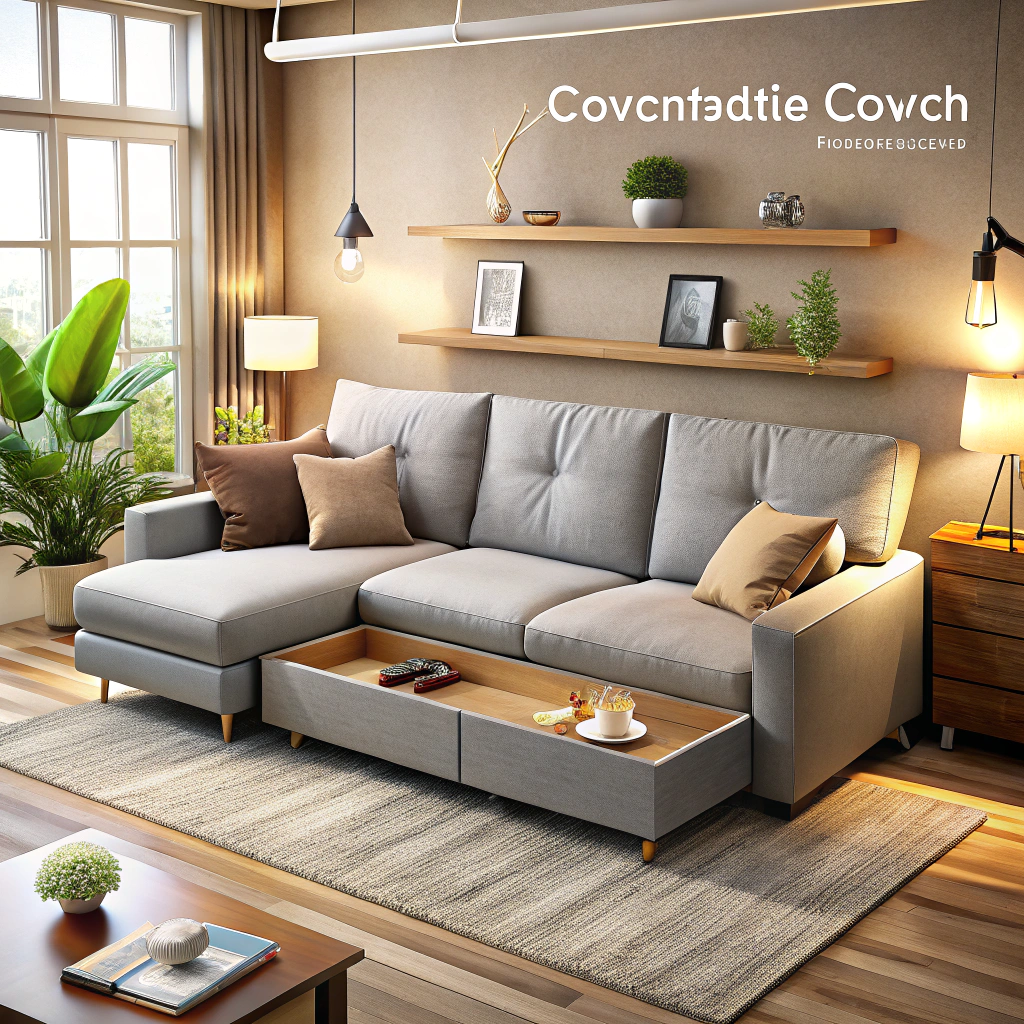Last updated on
Discover the perfect color for your new couch as we explore various factors to consider, ensuring that it complements your home and style beautifully.
Choosing the right couch can be a daunting task, especially when it comes to deciding on the color. With so many options available, it’s easy to get overwhelmed and end up with a couch that doesn’t quite fit your style or decor.
But fear not! In this article, we’ll guide you through the process of selecting the perfect color for your couch. Whether you’re looking for something bold and eye-catching or subtle and understated, we’ve got you covered.
So let’s dive in and find out what color couch is right for you!
Key takeaways:
- Consider the size of your room when choosing a couch color.
- Analyze your living space and existing decor before selecting a color.
- Take into account the architectural style of your home.
- Coordinate the couch color with the wall colors in the room.
- Consider the flooring in the room when choosing a couch color.
Table of Contents
Assessing Room Size
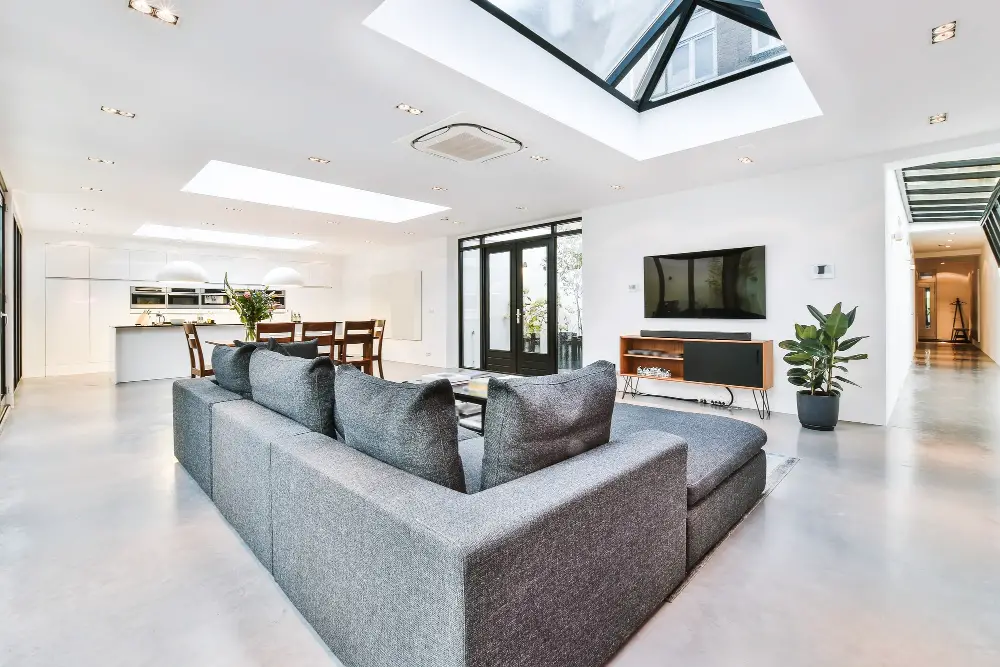
The size of your room is a crucial factor to consider when choosing the color of your couch. A large, spacious living room can accommodate a bold and vibrant colored couch without overwhelming the space.
On the other hand, if you have a small living area, it’s best to opt for lighter colors that will make space feel more open and airy.
Before making any decisions about color or style, take accurate measurements of your living area. This will help you determine what size couch would fit comfortably in your space without overcrowding it.
Once you’ve assessed the size of your room and determined how much floor space is available for seating arrangements, consider whether or not additional furniture pieces are needed such as an accent chair or coffee table.
Analyzing Your Living Space
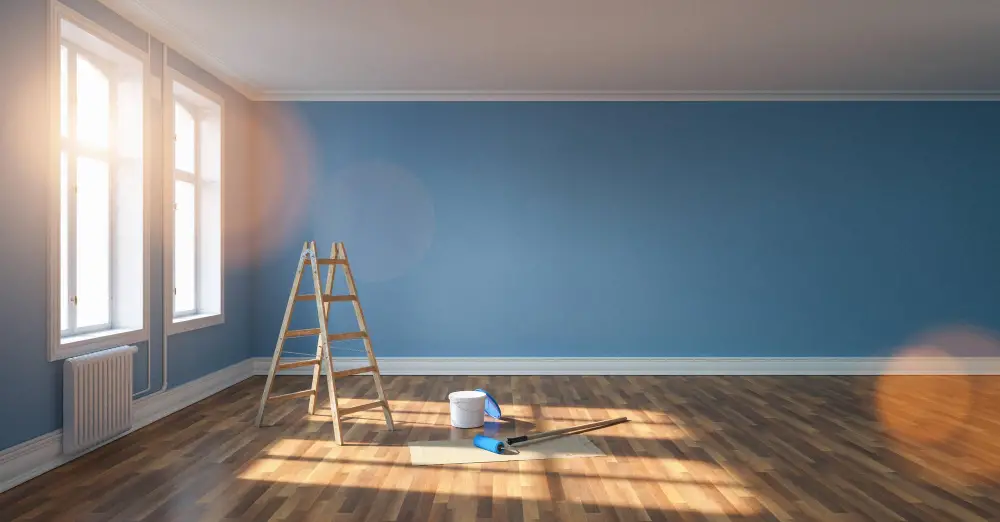
Take a step back and look at the room as a whole. What colors dominate the space? Are there any patterns or textures that stand out? Consider how you want your new couch to fit into this existing aesthetic.
If you have neutral walls and flooring, then a bold-colored couch can add some much-needed personality to the room. On the other hand, if you already have plenty of colorful accents in your decor, then opting for a more subdued hue might be best.
It’s also important to consider how much natural light enters the room throughout different times of day. A darker colored sofa may make an already dimly lit area feel even gloomier while lighter shades can help brighten up space.
Fitting With Architectural Style

A modern, minimalist couch may look out of place in a traditional Victorian-style home, just as an ornate and plush sofa might clash with the clean lines of a contemporary space. Take cues from your existing decor and choose a couch that complements rather than competes with its surroundings.
If you’re unsure about what style would work best for your space, take inspiration from design magazines or consult with an interior designer. They can help guide you towards styles that will fit seamlessly into your home while still reflecting your personal taste.
Remember: Your furniture should enhance the overall aesthetic appeal of the room without overpowering it.
Matching With Wall Colors

The right combination can create a cohesive and harmonious look, while the wrong one can clash and make your space feel disjointed.
If you have neutral-colored walls, such as white or beige, you have more flexibility in choosing a couch color. You could opt for something bold like red or navy blue to add some personality to the room.
Alternatively, if you prefer something more subtle, shades of gray or cream would work well.
On the other hand, if your walls are already painted in bright colors like yellow or green, it’s best to choose a couch that complements rather than competes with them. A neutral-colored sofa would be an excellent choice here since it won’t clash but instead provide balance and harmony.
Coordinating With Flooring

The right combination can create a cohesive and harmonious look in any room.
If you have hardwood floors, a neutral-colored couch such as beige or gray can complement the natural tones of the wood. On the other hand, if you have carpeted floors, you may want to choose a bolder color for your couch that contrasts with or complements the carpet.
Another option is to match your flooring and furniture colors for an elegant and sophisticated look. For example, if you have dark hardwood floors, pairing them with a dark brown leather sofa creates an upscale ambiance in any living space.
Ultimately, when coordinating with flooring colors remember that contrast is key – light colored furniture on darker floorings works well while darker colored furniture on lighter floorings also work well together.
Enhancing Room Lighting
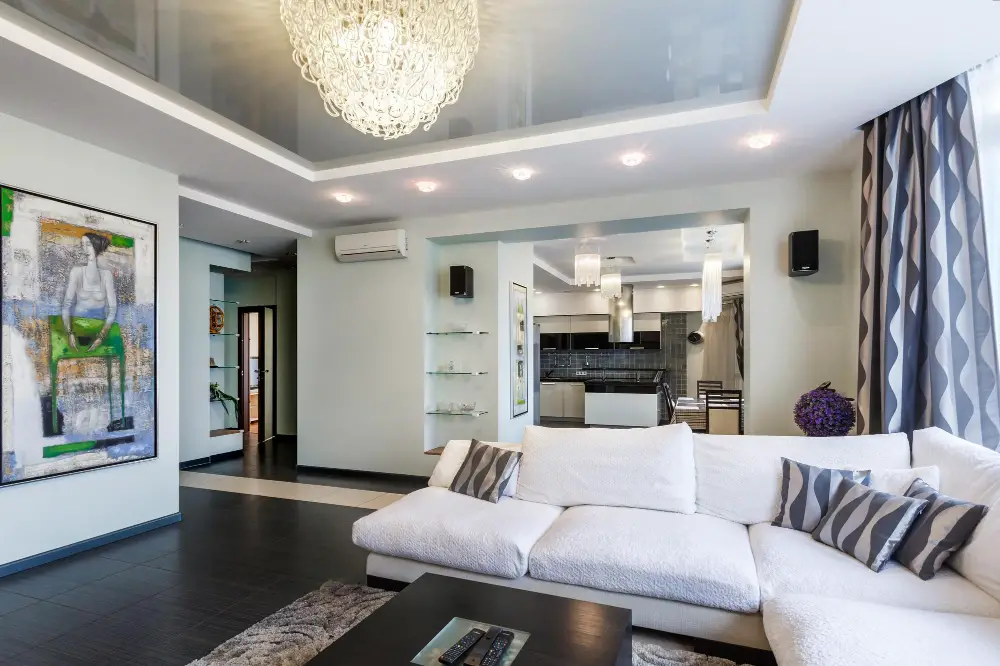
The right lighting can make your couch look more vibrant and inviting, while poor lighting can make it appear dull and unappealing. To enhance the lighting in your living space, consider adding a mix of ambient, task, and accent lights.
Ambient light provides overall illumination to a room; this could be achieved through ceiling fixtures or wall sconces. Task lights are designed for specific activities such as reading or working on a laptop; these could be table lamps or floor lamps placed near the couch area.
Accent lights add depth to space by highlighting artwork or architectural features in the room.
By incorporating different types of light sources into your living space design plan you will create layers that will help highlight various elements within that particular area including furniture like sofas/couches which are often focal points in most rooms.
Measuring Your Space: Size and Configuration

This will help you determine the size and configuration of the couch that will fit comfortably in your room. A common mistake people make is buying a couch that is too big or too small for their space, which can throw off the balance of the room and make it feel cramped or empty.
To avoid this mistake, take measurements of your living area before heading out to shop. Consider factors such as doorways, hallways, staircases and elevators when measuring so that you can ensure easy access during delivery.
Once you have determined how much space is available in your home for a new sofa set up an outline with masking tape on the floor where it would be placed; this way; You’ll get an idea of how much floor space each piece will occupy while also giving yourself some wiggle room to move around comfortably.
Transitioning Into Seasons
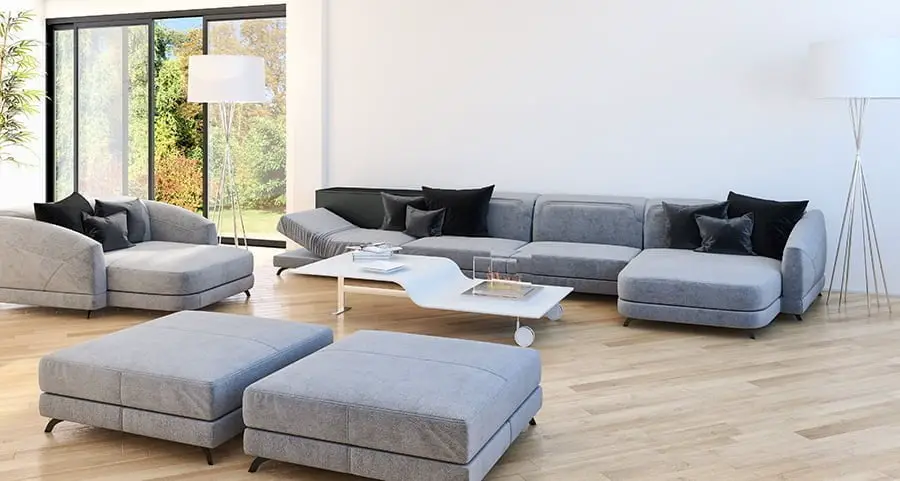
It’s important to consider how your couch color will fit in with the changing colors of nature outside. In spring and summer, you may want to opt for lighter shades such as pastels or bright hues that reflect the vibrant energy of these seasons.
On the other hand, fall and winter call for warmer tones like deep reds or earthy browns that create a cozy atmosphere perfect for snuggling up on your couch with a warm blanket.
But don’t feel limited by seasonal trends – ultimately it’s about what makes you happy and comfortable in your home all year round! If you’re someone who likes to switch things up frequently, consider choosing a neutral-colored couch that can be easily accessorized with colorful throw pillows or blankets depending on the season.
Remember: transitioning into different seasons is an opportunity to refresh your living space while maintaining its overall style aesthetic.
Color Psychology
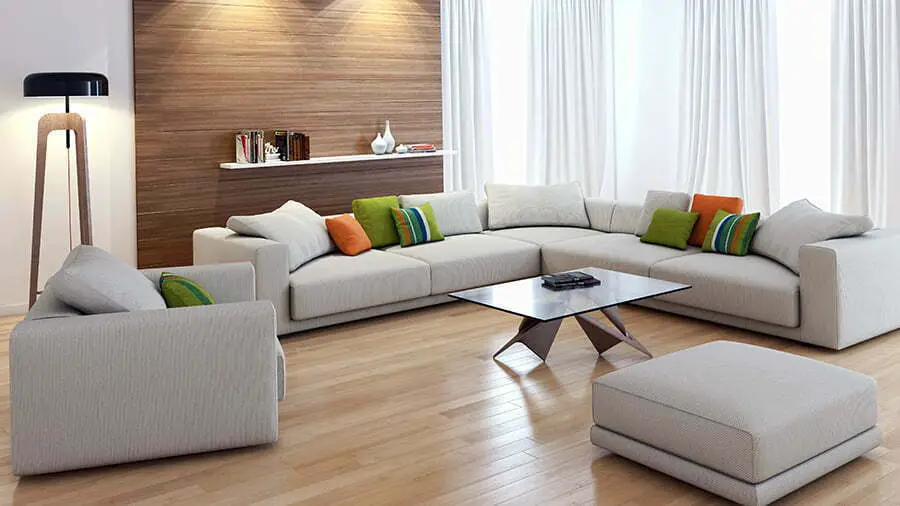
Colors have a significant impact on our emotions and can influence our mood, behavior, and even appetite. For instance, blue is known for its calming effect while red stimulates energy levels.
When selecting a color for your couch, it’s crucial to think about how you want the room to feel. If you’re looking for something soothing and relaxing, go with cool colors like blue or green.
On the other hand, if you want something that energizes the space or makes it more inviting than warm colors like yellow or orange are perfect choices.
It’s also important to note that different shades of each color can evoke different emotions as well; light blues may be calming while dark blues may be depressing.
Neutral Vs. Bold Colors
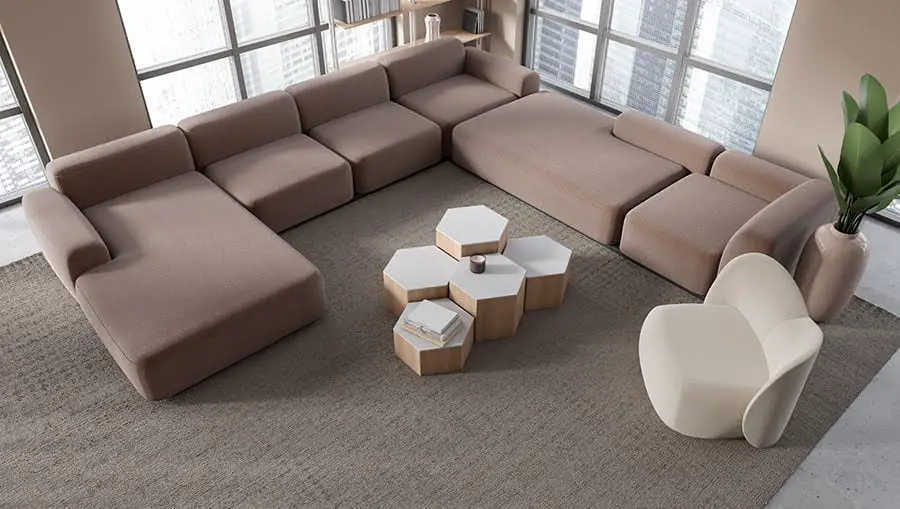
Neutral colors like beige, gray, and white are timeless and versatile. They can easily blend in with any decor style and provide a calming effect on the room’s atmosphere.
On the other hand, bold colors like reds, blues or greens make a statement in any space they occupy. They add personality to your living area while creating an eye-catching focal point that draws attention.
Choosing between neutral vs. Bold hues depends on personal preference as well as practical considerations such as lifestyle factors (e.g., children or pets) and existing decor elements (e.g., wall color).
If you’re unsure which direction to go in when selecting your couch’s color scheme – consider opting for something more subdued if you prefer minimalism; alternatively choose something bolder if looking for an accent piece that will stand out from its surroundings.
Light Vs Dark: Weighing the Pros and Cons
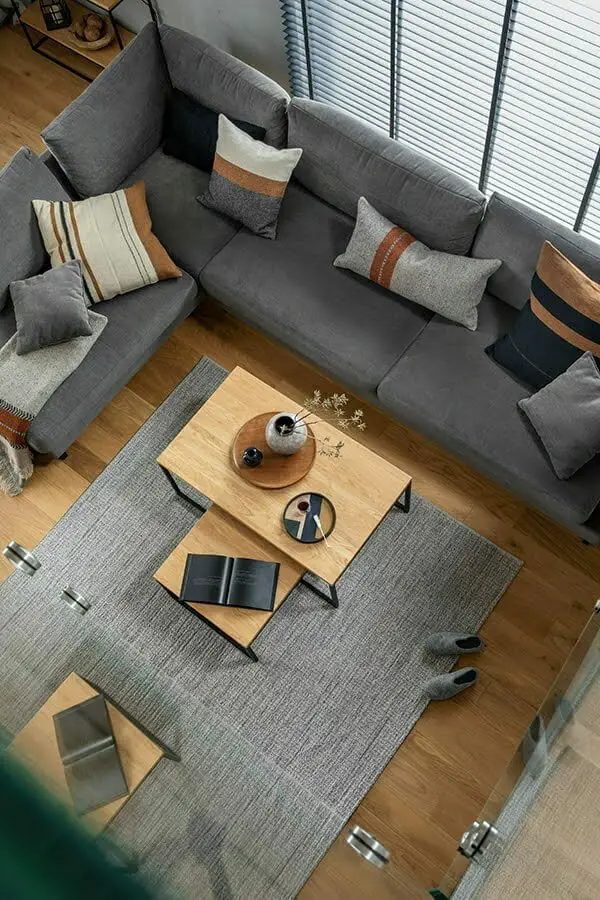
Both options have their pros and cons, so it’s essential to weigh them carefully before making a decision.
Light-colored couches can make a room feel more spacious and airy. They reflect natural light well, which can help brighten up darker spaces.
Lighter shades also tend to show less wear and tear over time than darker colors.
On the other hand, dark-colored couches are great for creating cozy atmospheres in larger rooms or open-plan living areas. They’re also better at hiding stains and spills than lighter shades – perfect if you have kids or pets!
Ultimately, the choice between light vs dark will depend on your personal preferences as well as practical considerations such as maintenance requirements and how much natural light enters your space.
Complementary Color Schemes
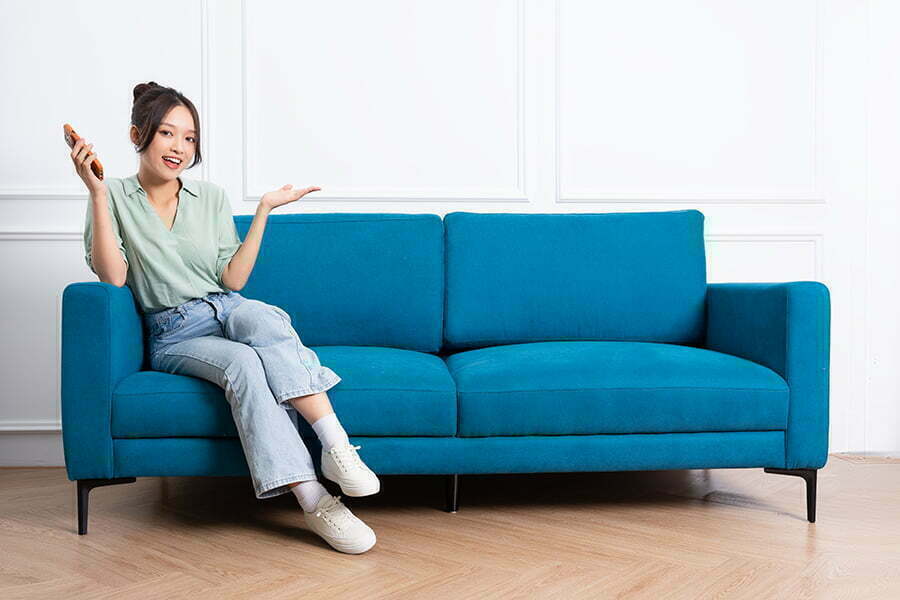
These schemes involve pairing colors that are opposite each other on the color wheel, such as blue and orange or red and green. When done correctly, complementary colors can add depth and interest to your room.
To incorporate this scheme into your couch selection process, consider choosing a couch in one of the complementary colors of your existing decor. For example, if you have warm-toned walls with hints of orange or yellow undertones, consider selecting a cool-toned blue or purple couch to balance out the warmth in the room.
Alternatively, you could choose an accent piece like throw pillows or curtains in one of these complementary shades to tie everything together without overwhelming your space with too much boldness.
Adding Patterns to Your Couch
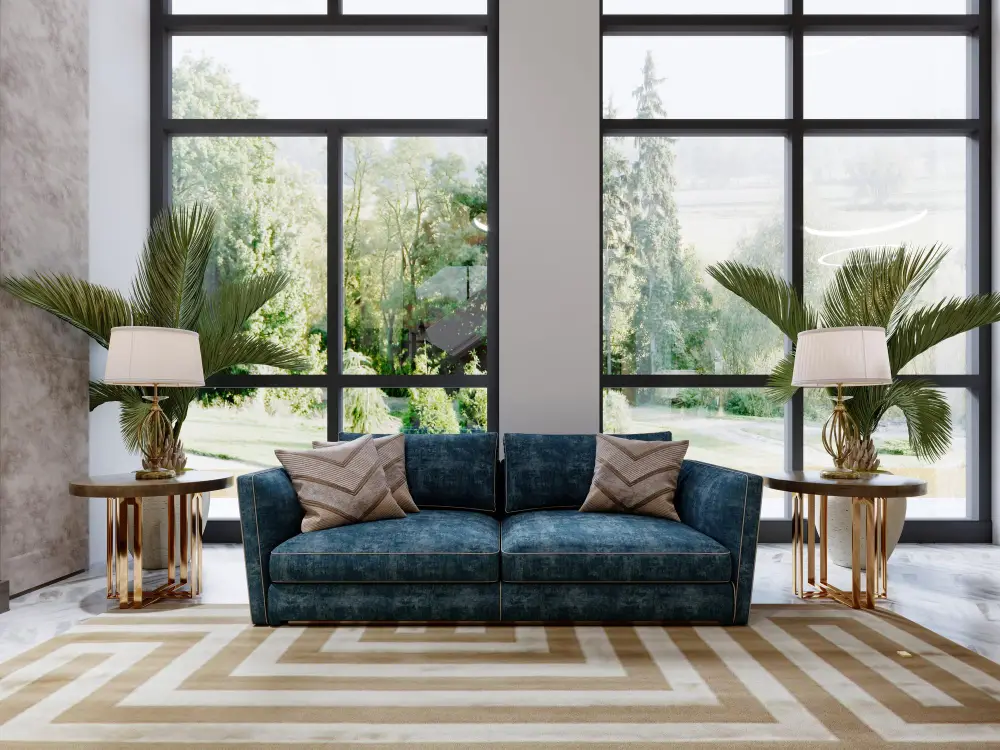
A patterned couch can be an excellent focal point in any room, but it’s essential to choose the right one that complements your existing decor.
When selecting patterns for your couch, keep in mind the color scheme of the room. If you have neutral walls and flooring, opt for bold patterns with bright colors or intricate designs.
On the other hand, if you have colorful walls or busy wallpaper already present in your living space, go with more subtle patterns like stripes or geometric shapes.
Another thing to consider is how much of a statement piece do you want this sofa? Do not forget that too many different prints can clash and create chaos instead of harmony; therefore try sticking with two-three complementary prints at most.
Choosing Fabric Materials

First and foremost, think about how you’ll be using your couch. If you have kids or pets, for example, you may want to opt for a durable and stain-resistant material like microfiber or leather.
Another factor to consider is the overall style of your home. If you’re going for a more traditional look, fabrics like velvet or chenille can add an elegant touch.
On the other hand, if modern minimalism is more your thing then sleek leather might be just what you need.
Of course budget also plays an important role in selecting fabric materials as some options can get quite expensive while others are much more affordable.
Material Matters: Fabric and Leather Options
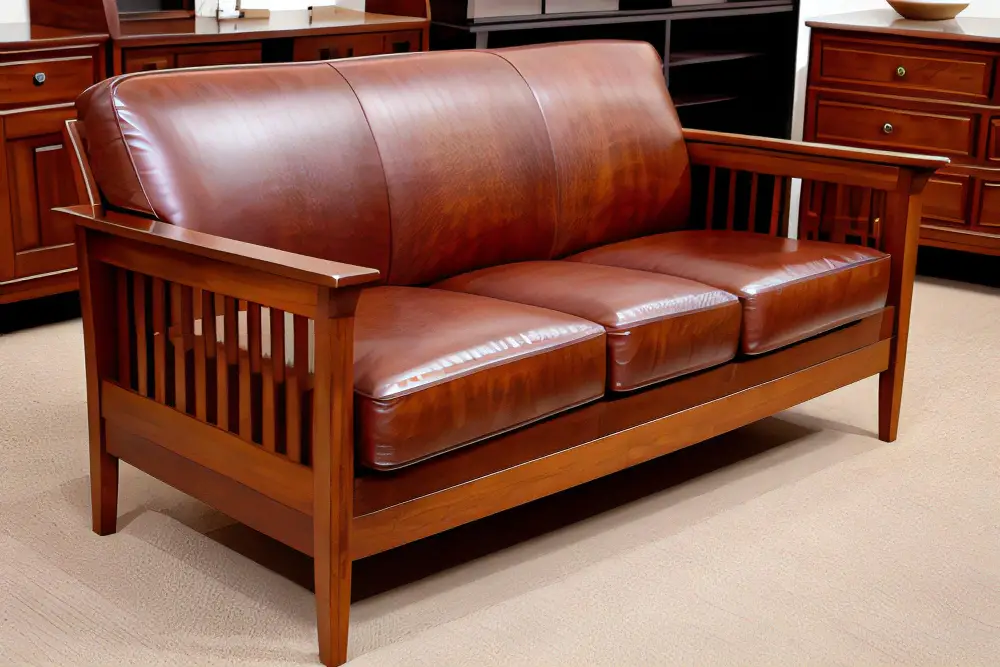
Both have their pros and cons, so it’s important to consider your lifestyle factors before making a decision.
Fabric is a popular choice for those who prioritize comfort over durability. It’s soft, cozy, and comes in a wide range of colors and patterns.
However, fabric can be more difficult to clean than leather since spills can easily seep into the fibers.
Leather is known for its durability and easy maintenance but may not be as comfortable as fabric initially due to its stiffness when new. Leather also tends to come in fewer color options than fabrics do.
Considering Lifestyle Factors
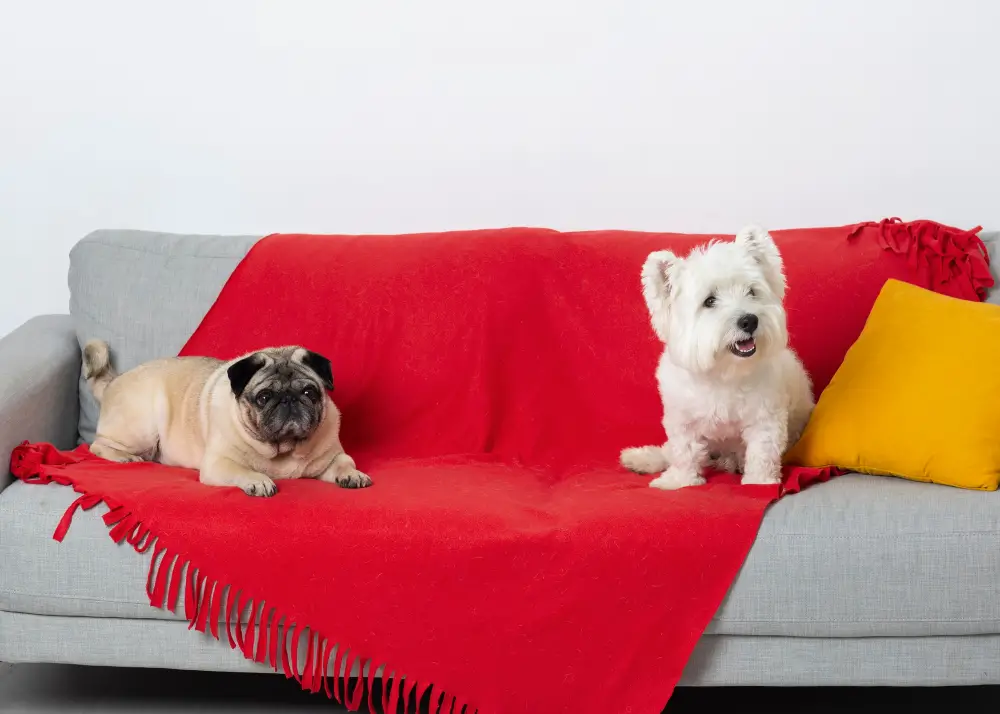
If you have kids or pets, for example, you may want to opt for a darker color that can hide stains and spills. On the other hand, if you live alone or with adults only and prefer a more sophisticated look in your living space then lighter colors could be an option.
Another factor to consider is how often you entertain guests. If hosting parties is part of your lifestyle then bold colors like reds or blues might make sense as they create an inviting atmosphere while also being easy on the eyes.
If relaxation is what matters most after long days at work then neutral tones such as beige or gray are perfect choices since they promote calmness and tranquility in any room setting.
Durability and Maintenance
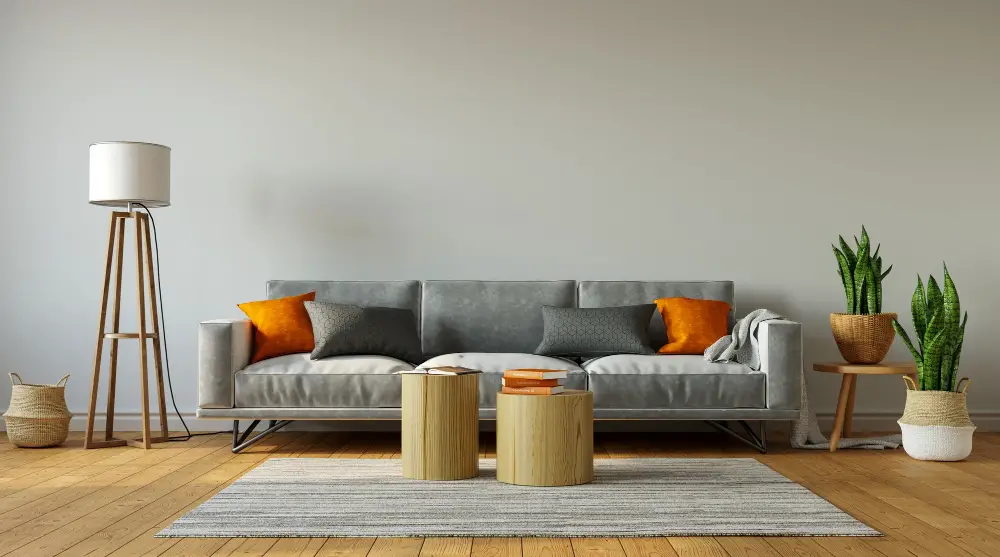
After all, you want your investment to last for years to come. If you have kids or pets, then choosing a durable fabric that can withstand spills and stains is essential.
Leather is an excellent option as it’s easy to clean and maintain while still looking stylish.
However, if leather isn’t your thing or doesn’t fit with the rest of your decor style, there are other options available such as microfiber or performance fabrics that are designed specifically for high traffic areas.
In addition to considering the material of the couch itself when thinking about durability and maintenance, also think about how easy it will be to clean around the couch. Will crumbs get stuck in between cushions? Will pet hair accumulate on certain materials? These factors should all be taken into account before making a final decision on which color couch will work best for you.
Balancing Style and Budget

You want something that looks great in your home but doesn’t break the bank. Fortunately, there are plenty of options available that allow you to achieve both goals.
One way to balance style and budget is by considering alternative materials such as microfiber or polyester blends instead of leather or high-end fabrics like velvet. These materials can be just as stylish while being more affordable.
Another option is to shop during sales events or look for clearance items at furniture stores. This can help you find a quality couch at a discounted price without sacrificing on style.
It’s also important not to overlook second-hand options such as thrift stores, consignment shops, or online marketplaces like Craigslist and Facebook Marketplace where you may find gently used pieces for significantly less than retail prices.
Ultimately, finding the right balance between style and budget requires careful consideration of your needs along with some research into different brands and retailers offering products within your price range.
Combining Style and Functionality
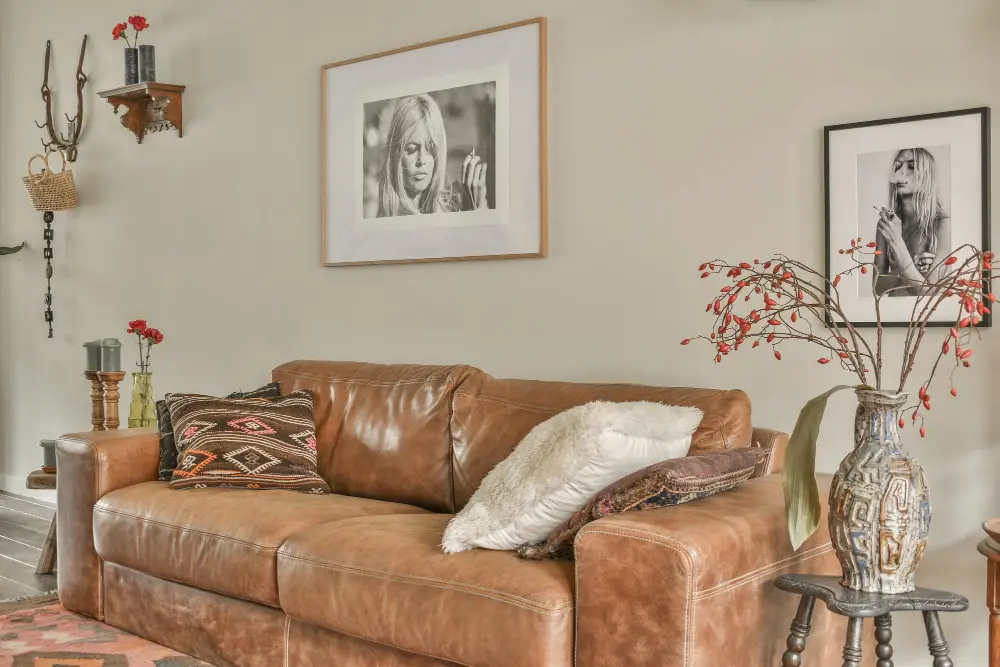
After all, you want your new piece of furniture to look great in your home while also serving its intended purpose. Fortunately, there are plenty of options available that can combine the two seamlessly.
One way to achieve this balance is by selecting a couch with hidden storage compartments or built-in features such as cup holders or USB ports. These functional elements can be incorporated into the design without sacrificing style.
Another consideration is the material of the couch itself. Leather and microfiber are popular choices for their durability and ease of maintenance, making them ideal for households with children or pets.
Ultimately, finding a balance between style and functionality comes down to personal preference and lifestyle needs.
Comfort and Functionality

After all, your couch is likely to be one of the most frequently used pieces of furniture in your home. When shopping for a new couch, take some time to think about how you’ll be using it.
Will you primarily use it for lounging and watching TV? Or will you often have guests over who need comfortable seating? If so, consider getting a sectional or sofa with additional seating options like an ottoman or chaise lounge.
Another factor to keep in mind is the durability of the materials used in making the couch. Leather sofas are known for their longevity and easy maintenance while fabric sofas offer more variety when it comes to colors and patterns.
Ultimately, finding a balance between style and function is key when selecting your perfect color couch that fits both your lifestyle needs as well as aesthetic preferences!
FAQ
Which is the best color for sofa?
A – The best color for a sofa depends on individual preferences and the room’s color scheme, with popular choices being neutral tones like beige, grey, or white.
What colour sofa is most popular?
The most popular sofa colours are blue and grey, as they have surpassed beiges and creams in popularity in recent years and are considered modern alternatives for a neutral sofa.
Is a darker or lighter couch better?
A lighter couch is better for family-oriented living rooms for a brighter ambiance, while a darker couch is more suitable for formal settings, providing depth and luxury to the interior design.
What color sofa makes room look bigger?
A light-toned sofa in neutral colors like beige, cream, light gray, or white makes a room look bigger as it creates a sense of openness and reflects light, making the space appear brighter and more spacious.
How do different sofa colors affect the overall mood of a living space?
Sofa colors significantly affect the overall mood of a living space by evoking different emotions and complementing or contrasting with other elements in the room.
How to choose the perfect sofa color to match your existing décor?
To choose the perfect sofa color to match your existing décor, focus on selecting a hue that complements the room’s dominant tones and enhances the overall theme.
What factors should be considered when selecting the upholstery color for a couch?
When selecting the upholstery color for a couch, consider factors such as room color scheme, style preferences, and maintenance requirements.
